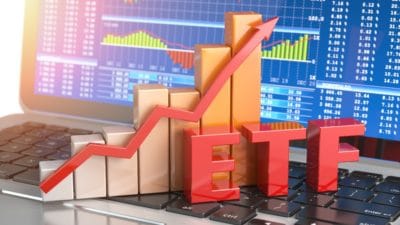Shares of the Calgary-based Cenovus Energy (TSX:CVE)(NYSE:CVE) plunged more than 8% on October 26 after it announced that it would buy Husky Energy (TSX:HSE). At the same time, Husky Energy investors cheered the news, and the stock jumped almost 12%.
Importantly, this could just be a start of the consolidation in the struggling global energy space, and we might see more of such deals on the back of the pandemic.
Cenovus Energy-Husky Energy merger
After the merger announcement, the global credit rating agency Fitch revised Cenovus Energy’s outlook from negative to positive. It maintained Cenovus Energy’s credit rating at “BB+”. With Husky, Cenovus Energy will achieve valuable production and refining operational synergies over the next few years.
This should result in a comparatively lower breakeven point and more resilient cash flows for Cenovus Energy. Cenovus Energy expects its new breakeven point at $36 per barrel compared to WTI crude oil’s $40-per-barrel level.
The combined entity is expected to save $1.2 billion as their operations merge. Even if the merger creates a more financially stable entity, it will result in layoffs in the short term. It will become the third-biggest company in the Canadian energy space based on production with an annual capacity of 750,000 barrels of oil per day. Canadian Natural Resources and Suncor Energy are the two largest Canadian producers ahead of Cenovus-Husky.
Will the pandemic play spoilsport?
Interestingly, the prolonged pandemic might delay the energy market recovery, which might continue to dent crude oil prices. Cenovus and Husky Energy are energy giants in the Canadian energy space with some of the largest debt piles on their books. Combined, they hold more than $15 billion in total debt at the end of Q2 2020.
Cenovus Energy management expects the combined entity will achieve net debt-to-adjusted EBITDA of less than two times by 2022. Notably, the delayed energy market recovery might continue to strain the company’s leverage. Net debt to EBITDA ratio is an important measure of leverage. It indicates how many years a company would take to repay the debt if debt and EBITDA are kept constant.
Both Cenovus and Husky have suffered a lot so far this year amid the pandemic. The prior completely suspended dividends, while the latter trimmed them by 90% to retain cash. Both have lost around $2 billion each in the first half of 2020. Shares of Cenovus are down about 65%, while Husky Energy stock has lost approximately 70% so far in 2020.
CVE stock
The energy sector has long been investors’ displeasure due to its high correlation with volatile crude oil prices. However, shunning the entire sector is not a great idea, especially for long-term investors. There are some lucrative plays that will be at new peaks post-pandemic. CVE stock looks undervalued at the moment, and the recent corporate action could accelerate investors’ returns over the long term.
Over the next few years, Cenovus Energy’s cash flows and earnings growth will likely improve with the accretion of Husky’s downstream operations. The pandemic will certainly dominate the global energy markets for the next few quarters. However, some of the strong names like Cenovus should see relatively faster recovery when the energy markets stabilize post-pandemic.







